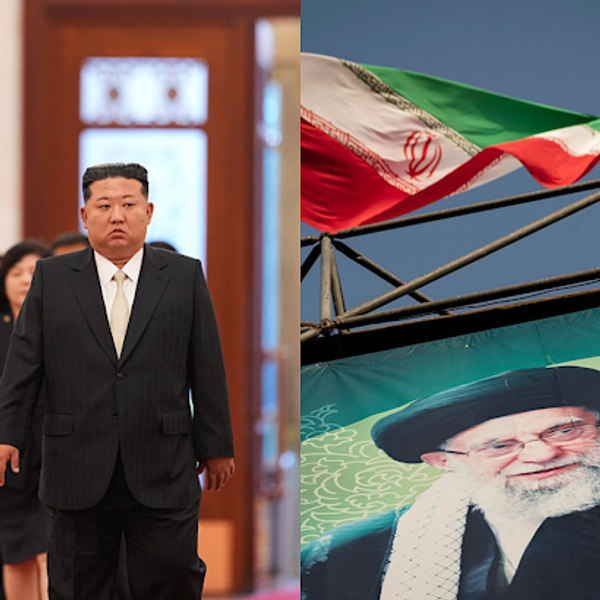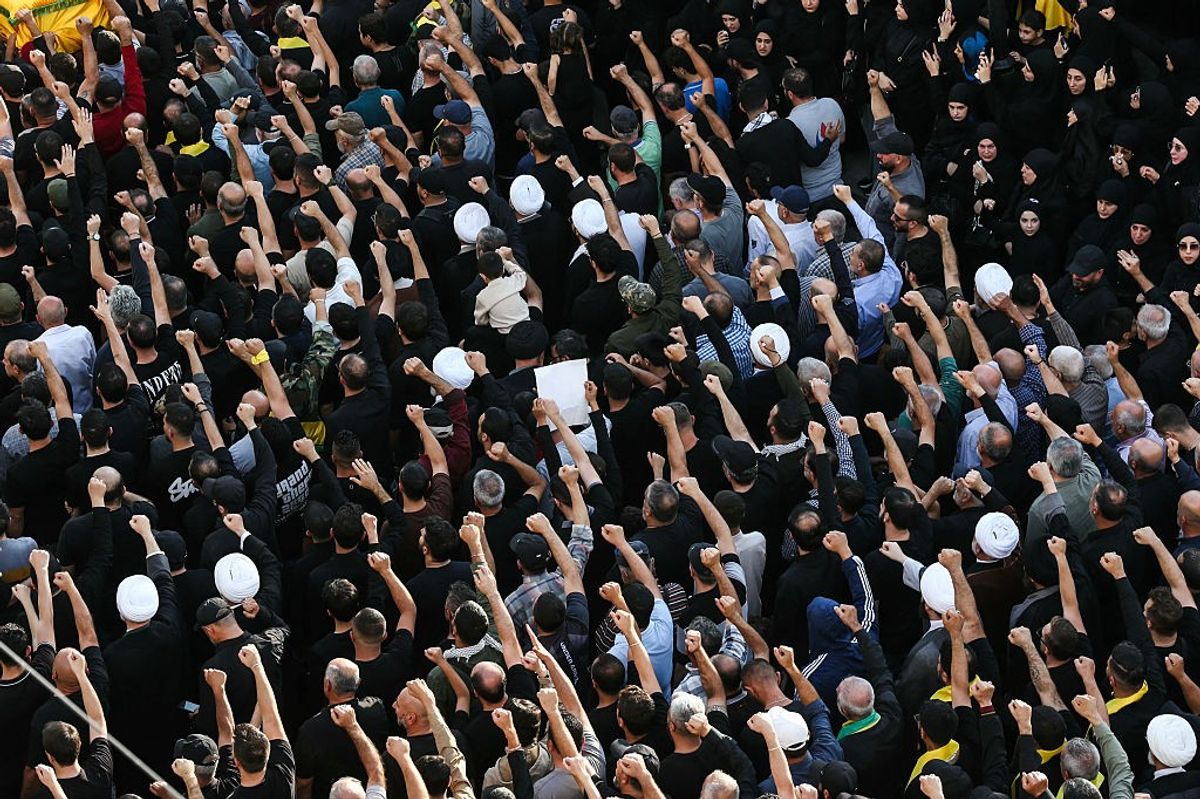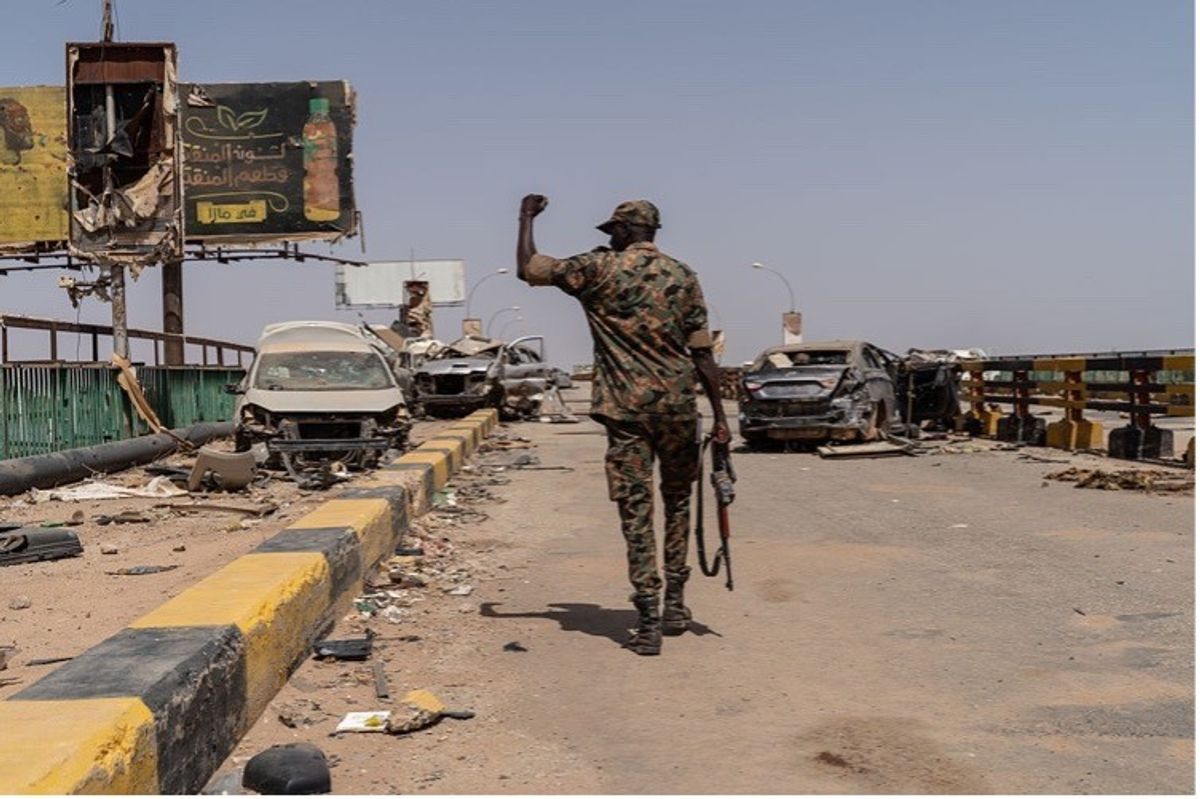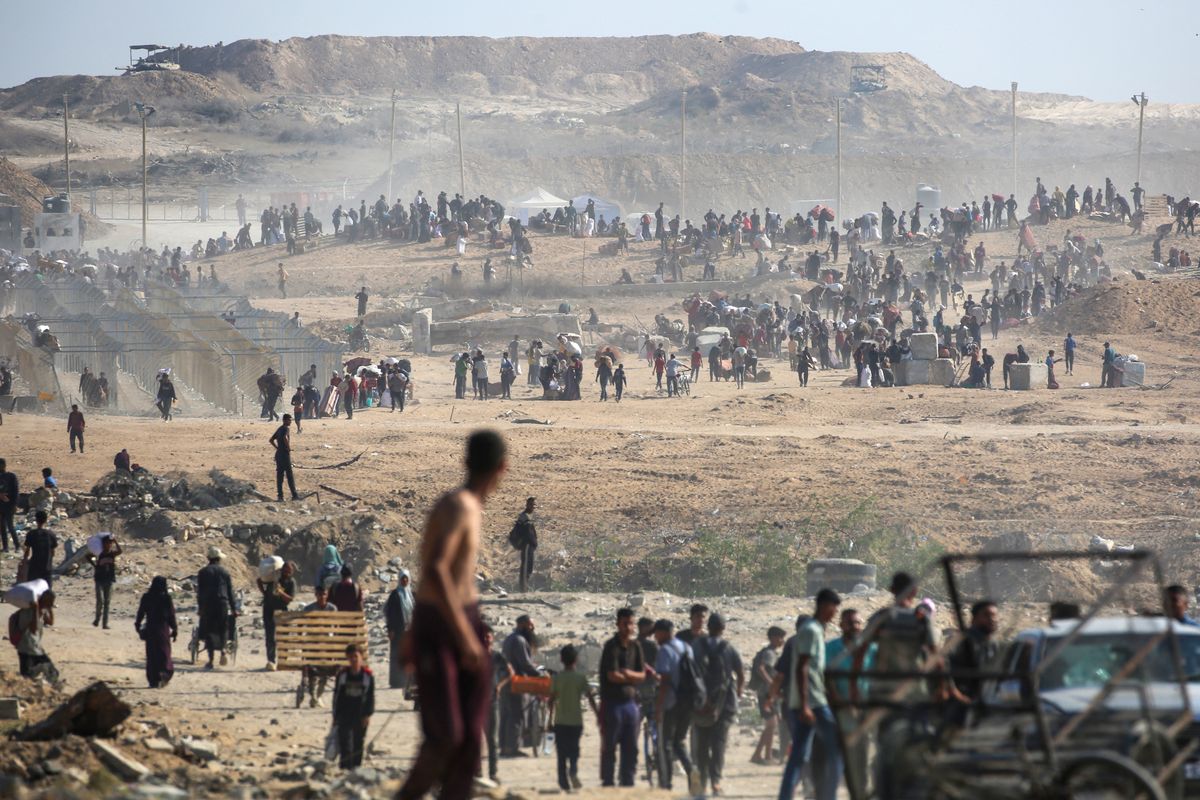OPINION — The real war will begin where the last one never ended: Iraq. With President Donald Trump back in office and reaffirming his pledge to prevent Iran from acquiring a nuclear weapon, the possibility of targeted U.S. strikes on Iranian nuclear infrastructure is no longer hypothetical — it’s the stick the Trump administration is holding against Iran as it begins negotiations over Iran’s nuclear program. If it comes to a military option, a kinetic strike on Iran’s nuclear infrastructure must be paired with a second prong: an irregular warfare campaign designed not to topple governments, but to constrain and dismantle Iran’s ability to respond asymmetrically.
Any such strike will not occur in isolation. Iran has made clear that its response to U.S. action will not be conventional. Instead, retaliation will be executed through a vast network of proxy militias it commands throughout the region. And Iraq, long the hub of Iran's proxy ecosystem, will certainly be the focal point of that backlash.
This reality highlights a critical shift in U.S. strategic thinking: any military engagement with Iran must be conceived not as a singular act, but as the beginning of a regional contest that will be fought largely in the shadows, through narrative and subversion. This second prong must be rooted in influence, disruption, and strategic ambiguity. And one of the most potent, though unconventional, vectors of that irregular warfare campaign is an unlikely figure: Muqtada al-Sadr.
Why regime change is a strategic dead end
To prepare for this inevitability, the U.S. must develop a strategy that does not rely on conventional escalation. A return to large-scale military deployments or a regime change doctrine would be strategically unsustainable, politically infeasible, and historically misguided. U.S. experience in the region, from post-2003 Iraq to the collapse of authority in Syria and Libya, has demonstrated that dismantling regimes without viable alternatives leads to protracted instability, sectarian violence, and openings for extremist actors.
Calls for regime change in Iran, while tempting in the face of nuclear escalation, risk repeating these same failures. Overthrowing the Islamic Republic without a stable, legitimate successor would create a power vacuum that Tehran’s proxies—and potentially more radical elements—would rush to fill. Strategic patience and precision, not maximalism, must define this phase of U.S. foreign policy.
Al-Sadr has been a complicated figure in U.S. foreign policy for over two decades—an adversary during the post-invasion insurgency, a political agitator, and an unpredictable populist. Yet throughout this trajectory, one theme has remained consistent: his rejection of foreign interference in Iraq, especially from Iran. Despite receiving support from Tehran at times to strengthen his position, al-Sadr has routinely resisted IRGC control over his movement. His consistent opposition to the Popular Mobilization Forces (PMF) and its core Iranian-aligned factions has positioned him as a nationalist bulwark within the Shi’a political spectrum.
A nationalist movement on the rise
His political base is robust, deeply entrenched, and highly capable of mobilizing. After winning 73 seats in the 2021 elections—the largest bloc in parliament—al-Sadr attempted to form a government that excluded Iranian-backed factions. When this was blocked by judicial maneuvering and rival coalitions, he ordered his members of parliament to resign and temporarily exited formal politics. But this was not retreat—it was a strategic repositioning. In 2024, he rebranded his movement as the "Shi’ite National Movement," launched synchronized prayer demonstrations across 13 provinces and received a rare audience with Grand Ayatollah Ali al-Sistani. All signs point to a return in the 2025 elections, where political observers think al-Sadr’s movement could realistically secure over 100 seats, enough to sideline Iran’s political clients.
The Sadrist movement’s strength lies not just in numbers, but in perception. Al-Sadr is seen by many Iraqis—particularly within impoverished Shi’a communities—as a legitimate voice against corruption, sectarianism, and foreign domination. This makes his movement uniquely suited to challenge Iran’s proxy hold on Iraq not through force, but through politics. And crucially, it does not require U.S. partnership, Title 50 authorities, or the covert provisioning of arms and cash.
This dynamic is particularly advantageous for the U.S. Al-Sadr’s anti-Iran posture creates friction that can be harnessed through indirect means—without engaging in a visible campaign of support that might delegitimize his message or provoke backlash. In this way, the U.S. can maintain strategic distance while still shaping the information and political space in its favor. The key for U.S. planners is not to engage al-Sadr directly, but to operate within the political space his movement opens—using non-attributable tools to shift narratives, mobilize anti-corruption bodies, and civic actors that already challenge PMF influence in Iraq’s political space, and fracture Iran’s support network without overplaying the American hand.
Experts are gathering at The Cipher Brief’s NatSecEDGE conference June 5-6 in Austin, TX to talk about the future of war. Be a part of the conversation.
Avoiding the pitfalls of failed U.S. proxy campaigns
Unlike Operation Timber Sycamore in Syria—which collapsed under the weight of fragmented command structures, extremist infiltration, and a lack of local legitimacy—the U.S. does not need to create a resistance movement in Iraq. It only needs to amplify an existing one. Timber Sycamore sought to manufacture opposition from disparate, externally supported factions. This top-down, externally driven model failed to produce a sustainable force with the local legitimacy needed to outlast foreign support. Rather than introducing new actors or further destabilizing the operational landscape, the U.S. can achieve its objective in Iraq—proxy dismantlement—by quietly amplifying the political friction al-Sadr's movement already generates.
By contrast, the Sadrist movement avoids the core pitfalls of previous U.S. proxy efforts: it is coherent, locally embedded, electorally viable, and rooted in national identity. Its growing momentum, combined with al-Sadr’s rejection of the PMF, offers a rare opportunity to disrupt Iran’s retaliatory capacity in Iraq without direct American involvement or high-profile intervention.
Operationalizing irregular warfare
An irregular warfare campaign in Iraq would consist of non-attributable, deniable actions that support the political and informational space al-Sadr is already cultivating:
- Information Operations: Use targeted digital campaigns to reinforce Iraqi nationalist narratives, expose the corruption and brutality of Iran-backed militias, and promote themes of sovereignty, reform, and economic renewal. Tools include persona-based engagement, geofenced messaging, and support to local media that highlight the PMF's discrediting actions.
- Cyber and EW Operations: Apply low-attribution disruptions to the communication platforms, logistics networks, and information channels used by the proxy groups. This can include denial-of-service attacks on militia media outlets, infiltration of messaging apps, and spoofing operations to degrade command and control during critical moments.
- Support to Civil Society: Quietly empower Iraqi civic institutions—particularly anti-corruption bodies, judicial reform efforts, and independent watchdog organizations—to marginalize the influence of proxy militias. This approach avoids high-profile funding campaigns and instead provides discreet support through NGOs and local actors already advocating for accountability.
These operations, taken together, offer a cost-effective, scalable, and minimally invasive way to influence the operating environment—an approach that reflects the modern realities of great power competition. They also reduce the risk of entrapment in prolonged engagements by leveraging local capacity instead of U.S. resources.
Each of these efforts would operate below the threshold of conflict and would not rely on overt coordination with al-Sadr. His movement’s unwitting alignment with U.S. strategic objectives is what makes it uniquely valuable. This is not partnership; it is exploitation of political friction.
The objective is not to eliminate Iran’s presence entirely, but to weaken its operational cohesion in Iraq, restore Iraqi sovereignty over internal security decisions, and preempt Tehran’s ability to escalate post-strike.
Everyone needs a good nightcap. Ours happens to come in the form of a M-F newsletter that provides the best way to unwind while staying up to speed on national security. Sign up today.
The containment imperative
Iran’s proxy model is not simply a regional nuisance; it is central to Tehran’s grand strategy. Groups like Kata’ib Hezbollah and Asa’ib Ahl al-Haq have already launched over 190 attacks against U.S. positions in Iraq and Syria in the past year alone. They remain armed, funded, and embedded within Iraqi institutions via the PMF. With Iran’s Quds Force coordinating these actions at a regional level, any U.S. kinetic action against Iran will be answered in Iraq.
What makes this threat more urgent is the degree to which these groups operate under both legal cover and informal immunity. They are embedded in the state, yet loyal to external actors. This duality renders them difficult to uproot through formal means—and all the more susceptible to political disruption from within.
This makes Iraq a proving ground for the effectiveness of any Iranian containment strategy. The U.S. cannot afford to let Iran define the tempo of retaliation. Nor can it afford another cycle of escalation that leads to conventional military entrenchment. Irregular warfare offers a means of shaping the battlespace, preemptively degrading Iran’s ability to respond without drawing the U.S. into a protracted fight.
A window of opportunity
As the 2025 Iraqi elections approach (they are scheduled for November), the convergence of Trump’s hardline Iran policy, al-Sadr’s political resurgence, and the doctrinal utility of irregular warfare create a rare window of opportunity. An empowered Shi’ite nationalist movement in Iraq—backed not by U.S. troops or cash, but by influence and information—could become the most effective obstacle to Iran’s proxy network. The U.S. should act accordingly.This is not a strategy of idealism or alliances. It is a strategy of utility—one that recognizes that political resistance, not regime change, is the future of strategic competition in the Middle East.
Kinetic strikes against Iranian nuclear infrastructure may become necessary if diplomacy fails, but they will inevitably provoke asymmetric retaliation. That response will not just come on conventional battlefields; it will unfold through information warfare, proxy violence, and political manipulation in Iraq. Countering it will require irregular tools calibrated to that environment.
Muqtada al-Sadr is not a partner of the U.S., but he does not need to be. His movement’s organic opposition to Iranian overreach, rooted in domestic legitimacy and cross-sectarian appeal, creates a rare opening. By exploiting the space he occupies—through discreet information operations, cyber disruption, and quiet institutional reinforcement—the U.S. can blunt Iran’s proxy response without expanding its military footprint. This two-pronged strategy – kinetic action paired with indirect disruption – offers a viable alternative to escalation. It draws on local forces, avoids the pitfalls of regime change, and aligns U.S. capabilities with the realities of modern great power competition.
The Cipher Brief is committed to publishing a range of perspectives on national security issues submitted by deeply experienced national security professionals.
Opinions expressed are those of the author and do not represent the views or opinions of The Cipher Brief.
Have a perspective to share based on your experience in the national security field? Send it to Editor@thecipherbrief.com for publication consideration.
Read more expert-driven national security insights, perspective and analysis in The Cipher Brief

















